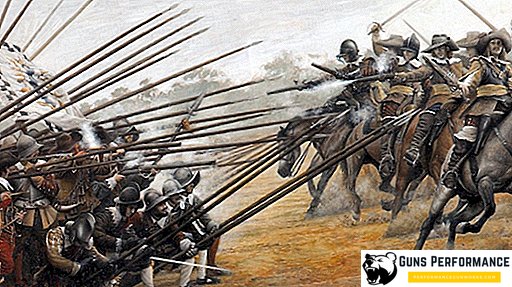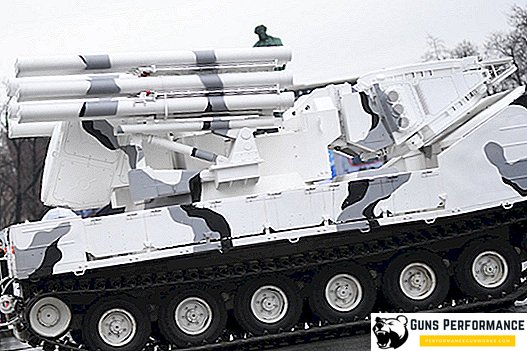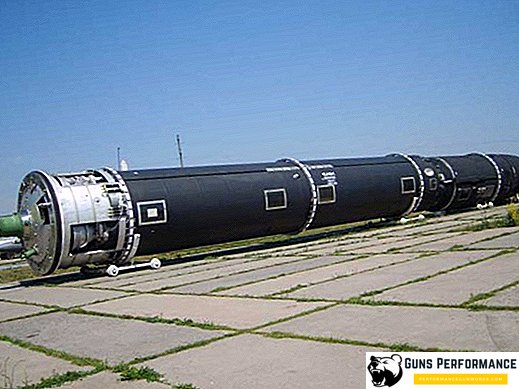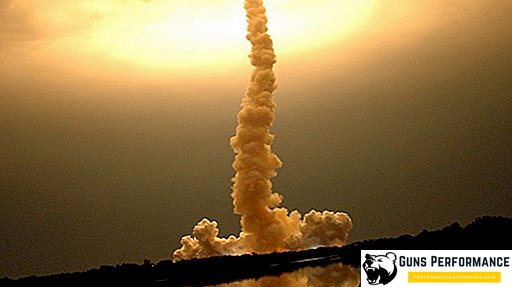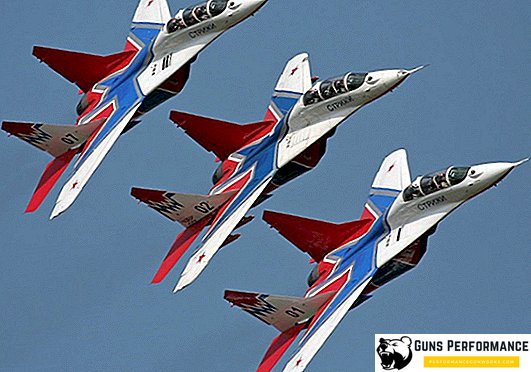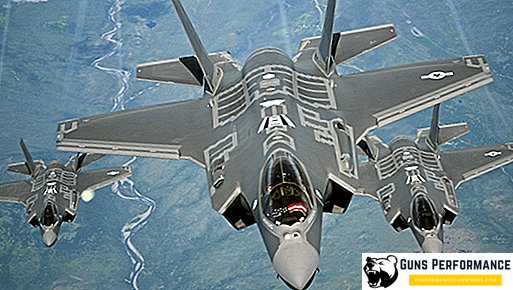At the beginning of the XXI century, Russia took part in a number of wars. These hostilities had an impact on the subsequent development of the Russian army, military equipment and military doctrine. One of the most striking examples of this is the reflection of Georgian aggression in South Ossetia by Russia and its allies on the one hand back in August 2008. Another name for this conflict is the “five-day war.”

Historical background
The border that arbitrarily divided the Ossetians between the RSFSR and the Georgian SSR was established in Soviet times. Then they could not even conceive that it would become the border between two unfriendly blocks.
While Georgia was part of the USSR, things were peaceful here, and there could be no question of a possible ethnic conflict. But everything changed after perestroika, when the Georgian authorities began to slowly but surely move towards independence. It was when it became clear that the withdrawal of the Georgian SSR from the Union was quite real, the South Ossetian leadership, for the most part to Russia, thought about its own sovereignty. And as a result, the autonomy of South Ossetia was declared in 1989, and in 1990 its full sovereignty.
However, the Georgian government was against it. Then, in 1990, the Supreme Council of Georgia declared the decree granting autonomy to South Ossetia null and void.
The war of 1991-1992.
On January 5, 1991, Georgia introduced a three-thousandth police contingent to the capital of South Ossetia, Tskhinval. However, after a few hours, street fighting broke out in the city, often with the use of grenade launchers. In the course of these battles, the hopelessness of the decision of the Supreme Council of Georgia became apparent, while the Georgian detachment itself was gradually pushed back toward the center of the city. As a result, the Georgian contingent was relegated to positions in the center of Tskhinval, where he began to prepare for a long-term defense.
On January 25, 1991, an agreement was reached on the withdrawal of the Georgian contingent from Tskhinval and the abandonment of the city, so that the fire stopped for several days. However, new provocations from the Georgian side made the truce short-lived.

It was also added to the fire that, according to the Soviet constitution, autonomous formations as part of the Soviet socialist republics leaving the Union could independently make decisions about their stay in the USSR. Therefore, when Georgia seceded from the Soviet Union on April 9, 1991, the South Ossetian leadership was quick to announce their future stay in the USSR.
However, the conflict flared up. The Georgian police and army controlled the territory and the heights near Tskhinval, thanks to which they could make artillery strikes on the city. The situation in it became truly catastrophic: the destruction, the death of people and the terrifying conditions did not add sympathy to the Georgian side.
On December 21, 1991, the Supreme Council of South Ossetia adopted a declaration on the independence of the republic, and a month later a corresponding referendum was held. It should be noted that this referendum was mainly boycotted by the Georgian population of the republic, therefore an absolute majority of the votes (about 99%) was given for independence. Naturally, the Georgian government did not recognize the independence of the region or a referendum.
The end of the conflict came quickly enough, and the cause was political instability in Georgia. At the end of 1991 a civil war broke out in this country, which significantly weakened Georgia’s position in the region. In addition, Russia intervened in the situation, which was not arranged by the smoldering hotbed of the southern border. Pressure was exerted on the Georgian government (up to the likelihood of an airstrike on Georgian forces in the Tskhinval area), and in mid-July 1992 the shelling of the city ceased.
The outcome of this war was that the people and the government of South Ossetia finally turned their backs on Georgia and continued with all their might to seek recognition of their independence in the international arena. The total casualties during the conflict were approximately 1,000 killed and 2,500 wounded.
The period of 1992-2008. Escalation of tension
The period after the Georgian-South Ossetian war became a time of wave-like tensions in the region.
As a result of the conflict of 1991-1992. An agreement was reached between the Russian, Georgian and South Ossetian sides on the deployment of a joint peacekeeping contingent into the territory of South Ossetia. This contingent consisted of three battalions (one from each side).
The first half of the nineties is characterized by a great diplomatic game that was played by all parties. On the one hand, South Ossetia sought to finally separate from Georgia in the eyes of the international community and become part of the Russian Federation. Georgia, in turn, methodically "squeezed" South Ossetian independence and autonomy. The Russian side was interested in peace in South Ossetia, but soon focused on Chechnya, another far from peaceful region.
Nevertheless, negotiations continued throughout the first half of the nineties, and in October 1995, the first meeting between the Georgian and Ossetian parties took place in Tskhinval. The meeting was attended by representatives of Russia and the OSCE. During the meeting, an agreement was reached on the abolition of the decree of the Georgian Supreme Council on the elimination of the autonomy of South Ossetia, as well as absenteeism of the republic from Georgia. It is worth noting that, perhaps, the Russian leadership took this step in exchange for not recognizing the Chechen Republic of Ichkeria by the President of Georgia E. Shevardnadze and his support for the actions of the Russian troops in Chechnya.
In the spring of 1996, a memorandum on the non-use of force in South Ossetia was signed in Moscow. It became a real step forward in the Georgian-Ossetian relations. And on August 27 of the same year, the first meeting of the Georgian President E. Shevardnadze and the Chairman of the Parliament (and in fact the head of state) of South Ossetia L. Chibirov took place. During this meeting, the parties outlined further ways to normalize the situation, but after the meeting, E. Shevardnadze stated that "it is still early to talk about the autonomy of South Ossetia."
Nevertheless, the situation by the year 2000 contributed to the further consolidation of peace in the region, the return of refugees and economic recovery. However, all the cards were confused by the coming to power in Georgia in January 2004 as a result of the M. Saakashvili’s “Rose Revolution”. It was he who represented that young, nationalist-minded generation of Georgia, which, in pursuit of momentary success, did not disdain with populist ideas, albeit sometimes quite absurd.
Even before his official election as president of Georgia, Mikhail Saakashvili visited South Ossetia, and this visit was not coordinated with the South Ossetian authorities. At the same time, he allowed himself a remark that "2004 will be the last year when South Ossetia and Abkhazia do not participate in elections in Georgia." Such a statement has contributed to the destabilization of the situation.
In 2004-2008 The situation around South Ossetia and the Russian peacekeeping battalion on its territory continued to heat up. In the spring of 2006, the leadership of Georgia declared Russian troops of the peacekeeping contingent in South Ossetia criminals. The reason for such a loud statement was that the servicemen from Russia did not have visas issued by the Georgian side and allegedly stayed on the territory of Georgia illegally. At the same time, the Georgian side demanded either to withdraw the Russian peacekeepers, or to "legalize" them.
Meanwhile, fighting broke out in a number of areas in South Ossetia. Skirmishes, provocations and shelling, including mortar, ceased to be a rarity. At the same time, the overwhelming number of provocations were arranged by the Georgian side. It is also worth mentioning the statement made in May 2006 by the then Minister of Defense of Georgia, Irakli Okruashvili, who said that by May 1, 2007, South Ossetia would become part of Georgia. In response to this clearly provocative statement, Russian Defense Minister Sergei Ivanov guaranteed assistance to Abkhazia and South Ossetia in the event of Georgia’s aggression against them.
It was in 2006 that the process of confrontation between Georgia and South Ossetia took final shape. The Georgian leadership in its nationalist hysteria continued to declare that the Georgian territory must be inviolable and restored by any, even military means. It is precisely in this context that Georgia has embarked on a rapprochement with the United States and NATO. American military equipment and instructors, who became frequent guests, arrived in the Georgian army.
At the same time, from the very beginning of its existence, South Ossetia adhered exclusively to the pro-Russian course, therefore, in principle, there could not be a “peaceful” union with Georgia after Saakashvili came to power. In November 2006, a referendum was held in South Ossetia on supporting independence. As a result, about 99% of the residents of South Ossetia who voted supported the preservation of the independence of the republic and the continuation of its foreign policy.
Thus, by August 2008, the situation in the region became aggravated to the limit and a peaceful solution of the issue was practically impossible. Georgian "hawks" led by Saakashvili could not retreat, otherwise they would have lost their prestige and weight in the eyes of the United States.
Commencement of hostilities on August 8
On August 8, 2008, approximately 15 minutes after midnight, the Georgian army suddenly opened fire on the Tskhinvali of their Grad multiple rocket launchers. Three hours later, Georgian troops moved forward.
Thus, the truce was violated by the Georgian side, and the Georgian army managed to seize a number of settlements in the territory of South Ossetia (Mugut, Didmukha) as well as break into the outskirts of Tskhinval in the first hours of the attack. Nevertheless, the South Ossetian militia forces were able to inflict substantial losses on the aggressor at the very beginning of the conflict and bring down the pace of the Georgian blitzkrieg by stubborn defense.

At this time in the very Tskhinvali as a result of the Georgian artillery attack victims appeared among the civilian population. The city was caught unawares, but the inhabitants bravely met the news of the Georgian invasion. Another tragic episode of the initial period of the war was the death of Russian peacekeepers from the fire of Georgian salvo installations. This fact finally convinced the Russian leadership in the absence of a prospect for a peaceful settlement of the conflict. President of the Russian Federation Dmitry Medvedev announced the start of an operation to force the Georgian side to peace.
In the morning, Russian aviation began to launch air strikes against Georgian troops, thereby sharply reducing the rate of their attack. The Russian columns of the 58th Army, which formed the main reserve and the main defense forces in the South Ossetian direction, moved through the Roki tunnel to help peacekeepers and South Ossetian militia units.

During the day, the Georgian troops managed to press the Russian-South Ossetian troops substantially, surround the barracks of the Russian peacekeepers, but it didn’t work to turn the tide in their favor. In fact, by the evening of August 8 it became clear that the Georgian “blitzkrieg” had failed and it would not be possible to seize Tskhinval immediately. However, the Georgian media reigned victorious; it was announced that the assault on Tskhinval is going well.
Further development of the conflict (August 9-11)
By the morning of August 9, the fighting in Tskhinval continued, but the Georgian troops no longer had significant superiority. Having been tied up in street battles, they now sought to seize as much territory as possible, so that in the course of subsequent peace negotiations (of which no one doubted on August 9) to have at least some trumps in their hands. However, the militia and Russian peacekeepers continued to stubbornly defend the city’s neighborhoods.
At the same time, the group consisting of units of the 58th Russian army arrived in Tskhinval, in addition to the scene of the events, the 76th airborne division was deployed. A battalion group was also set up, separated from the 135th motorized rifle regiment. The task of the group was to unlock Russian peacekeepers and to establish contact with them.
However, since the offensive outburst of the Georgian troops had not yet been exhausted, and the troops themselves had sufficient manpower and equipment, the Russian battalion suffered significant losses as a result of the encounter battle, and by the end of the day was withdrawn from the city. However, this counter-attack contributed to the speedy halt of the Georgian offensive and the transition of Georgian forces to defense.
Throughout the day of August 9, Russian air strikes against Georgian troops took place, as well as mutual shelling. A group of ships of the Russian Black Sea Fleet entered the territorial waters of Georgia with the aim of patrolling and excluding aggressive actions of Georgia at sea. At the same time, the next day, on August 10, 2008, the attempt of the Georgian naval forces to penetrate the conflict zone was reflected.

On August 10, Russian troops launched a counter-offensive and began to oust Georgian forces from Tskhinvali, and the Russian-Abkhaz forces began to be deployed from areas bordering Georgia. Thus, on the third day of the conflict, the Georgian offensive was completely exhausted, and the front line began to move in the opposite direction. The result of the defensive battles was, first of all, the complete stop of the Georgian troops, their losses and complete disorganization. It was at this point that panic began in the Georgian leadership, caused by the threat of a complete military defeat. Saakashvili asked NATO countries to intervene in the conflict and "save Georgia from the clutches of the Russian aggressor."
On August 11, Russian troops completed the liberation of the territories captured by the aggressor in South Ossetia and entered the territory of Georgia. Nevertheless, this event was in every possible way highlighted as the need for "forcing Georgia to peace." On the same day, Russian troops occupied Zugdidi in western Georgia without a fight, and the city of Gori was abandoned by Georgian troops.

Truce and end of conflict
On August 12, Russian President D. Medvedev announced that there was no longer any danger for the civilian population of South Ossetia and the Russian military, which meant that the operation to force the aggressor to peace should be stopped. After that, with the mediation of French President and European Union President Nicolas Sarkozy, negotiations began between Russia and Georgia. The general meaning of the future peace agreement was based on the non-use of force to resolve controversial issues, end hostilities, withdraw troops to the positions they occupied before the start of the conflict, access of humanitarian aid to the region, as well as the start of international discussions on the status of South Ossetia and Abkhazia. The Georgian leadership agreed with all clauses of the agreement, except for the clause on the status of Abkhazia and South Ossetia. This item has been reformulated.
During the following days, the process of withdrawing Russian troops from the territory of Georgia continued. On August 16, the peace agreement was signed by the heads of the Russian Federation, Abkhazia, South Ossetia and Georgia. Thus, although this conflict is called the five-day war (due to the fact that the phase of active hostilities lasted from 8 to 12 August 2008), but in fact it was completed on 16 August.

Results and consequences of the five-day war
The results of the August conflict in South Ossetia by each side of the conflict are interpreted in their own way. The Russian leadership announced the victory of the Russian and South Ossetian troops, curbing the aggressor, inflicting a serious defeat on it and the exclusion of new large-scale military conflicts in the near future. However, single-handed battles and artillery shelling, ambushes and shootings continued until the end of 2008.
The Georgian leadership announced the victory of the Georgian troops, and Georgian President M. Saakashvili said that one Georgian brigade, equipped with the latest American weapons, was able to defeat the entire 58th army. Nevertheless, if we objectively evaluate the results of the conflict, it should be noted: the statement of the Georgian leadership was made exclusively for propaganda purposes and had nothing to do with reality.
As for the losses suffered by the parties to the conflict, their assessments also differ. According to Russian data, the losses of the troops of Russia, South Ossetia and Abkhazia amount to about 510 people killed and wounded, while the losses of Georgia are about 3000. The Georgian side claims that the losses of the Georgian troops during the conflict were about 410 killed and 1750 wounded, and the loss of Russian troops and their allies - about 1,500 people killed and wounded. Thus, no "defeat of the Georgian brigade of the whole Russian army" was not even close.

Объективно признанным итогом войны в Южной Осетии стала победа России и её союзников, а также тяжёлое поражение грузинской армии. При этом в результате расследований, проведённых Международной комиссией Евросоюза, было доказано, что агрессором в конфликте являлась именно Грузия, но в то же время указывалось на "провокативное поведение России, подвигнувшее Грузию на силовое решение вопроса". Тем не менее, как это "провокативное поведение" увязывалось с отказом России принять в свой состав Южную Осетию и Абхазию, а также с непризнанием независимости республик - Комиссия ответа дать так и не смогла.
Последствиями пятидневной войны стало признание Россией независимости Южной Осетии и Абхазии, начало конфронтации между РФ и Грузией (уже в сентябре 2008 года между государствами были разорваны дипломатические отношения). США, несмотря на выводы Комиссии об ответственности Грузии за начало войны, обвинили Россию в агрессивном стремлении расширить свои границы. Таким образом, конфликт в Южной Осетии можно назвать новой эпохой во взаимоотношениях между Россией и западным миром.


